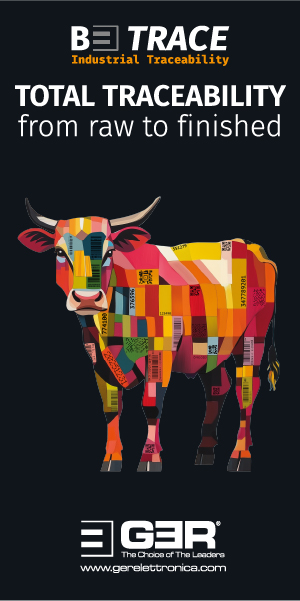Double-digit growth (again)

Official figures from India’s Council for Leather Exports (CLE) show the industry there is likely to have achieved export revenue growth of around 33% in the financial year that ended this March, taking total revenues to around $5 billion. CLE president, Sanjay Leekha, says he is confident India’s leather industry can achieve further growth in the years ahead.
You talked recently about the importance of the leather industry in India adding value and skilling up its people. What is the perception in India of the leather industry and of the people who work in it?
See, traditionally, 50 years ago, leather was more of a traditional industry. People from certain segments of society would work in the industry, but as the industry grew and became more about value-added, I think it started employing people from across all segments of society. Today the industry employs people from every possible religion, every possible section of society and from every possible financial level of society. I would say it provides a level playing field for almost everybody in India.
We have seen news of campaigns, in some Indian states more than others, to have leather production stopped. How seriously should we in the outside world take those reports?
We are a democratic country and we take pride in our democracy. I would say that, although, one of our major religions, Hinduism, does have issues with cow slaughter, it does not really translate into any direct issues with how the industry runs. There are, of course, laws that monitor how animals are treated, including how animals are slaughtered, and we have to abide by them.
The numbers you have cited recently for leather-sector exports from India are impressive. Something that caught the eye in particular is that you said exports to the US surpassed $1 billion for the first time in financial year 2021-2022. What do you think led to that growth?
Yes, we reached $1 billion in exports to the US in the financial year that ended on March 31. This has gone up from something like $600 million the year before. Substantial growth has happened. I think that there is scope for substantial further growth. The reason for that is that our scale of operations is getting bigger. This means we are becoming more interesting for US customers, because of the volumes they require. The larger brands are all looking at India now, the US brands for sure. Handbag brands, footwear brands, they are all looking at India. That is what is helping this growth. I think our next big period of growth will come from the US.
Will India be able to maintain this growth in the US if trade relations between the US and China improve?
The China Plus One strategy, through which companies attempt to avoid concentrating their business interests too heavily in China, gives us an opportunity. It’s up to us to perform well and take advantage of that opportunity. That is really something that is quite individual. Some of the players in the industry will be able to take advantage, some may not. This started before China Plus One, really. It started when President Donald Trump put a 25% tariff on some leather products from China. People sitting in corporate boardrooms in the US probably decided that their dependence on China was way too big; their whole survival was at stake and they started looking at India. One thing that went slightly against us at that time was the fact that the US Generalized System of Preferences that we were benefiting from was removed [in 2019]. That had some impact and negated some of the advantages we had with the China tariffs, but all the same I think that, in terms of numbers, it was a 6%-10% duty benefit that was withdrawn, which is substantial, but it was not in line with what China was being put through, so we managed to survive it. After that, with the pandemic and disruption to the supply chain everywhere, that further pushed the situation. We as a country still have a substantial advantage now and I’d really like to see this going forward.
Why is the Council for Leather Exports enthusiastic about the growth of non-leather shoes?
There may appear to be a contradiction. The Council for Leather Exports represents the footwear industry as well as the leather industry. In footwear, there has been more stress on leather footwear, but with changing trends, the same factories are converting some of their capacity to non-leather. Also the expertise of manufacturers who make leather shoes is being deployed to set up new factories for non-leather footwear. I personally see that the non-leather footwear sector has a huge potential to grow.
CLE’s focus is on exports, of course, but how does the domestic market look to you?
We are currently estimating the domestic market to have a value of about $12 billion per year and a large chunk of that comes from footwear. And on the footwear front, with a population of 1.35 billion and a per-capita consumption of approximately two pairs per annum, we are looking at substantial production being acquired by local consumers. Now, when we look at a slightly growing economy, and more disposable income with that, I see that, if the per-capita consumption were to increase even by half a pair or one pair, you’re talking about a large number of additional shoes that are going to be required. These shoes will need to be produced locally because the government has been trying to put in systems that will help us become less dependent on low-cost imports. That’s the direction India is moving in. We have certain quality standards, which means we are developing the quality of the shoes being sold in the country, whether from domestic production or imports. They all have to be of a certain level of quality. I think this will help the industry in the long term, help it to become more dependable, more reliable and producing better quality.
How optimistic are CLE members about this new financial year, 2022-2023? What is your reading of the situation?
With the pandemic now nearly under control, the leather industry in India is very aggressive about growing, about further investment, and about building additional capacity. I think most of the large players you could speak to will tell you that their order books are quite full. In the current financial year, April 2022-March 2023, we expect what could be game-changing kinds of numbers. I cannot give you a specific number but what we are looking at is double-digit growth again, which in the current scenario is fairly good.
Council for Leather Exports president, Sanjay Leekha, says that, with the pandemic “nearly under control”, he is confident of further substantial growth for the Indian leather industry this year.
Credit: APLF






























